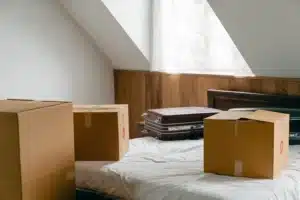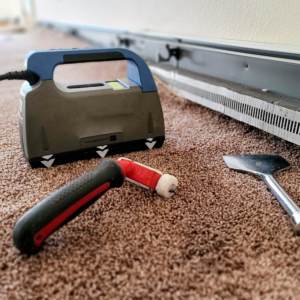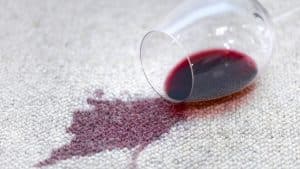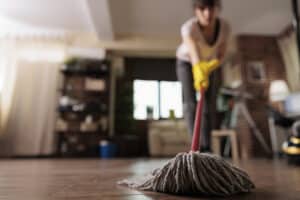What Is Black Mould?: One very common problem that manifests in both domestic and commercial properties alike is black mould, something that happens because of a buildup of moisture throughout the property that happens as a result of poor ventilation and high humidity.
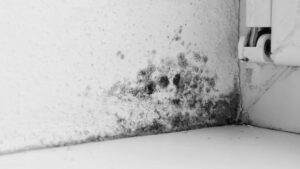
It’s quite easy to spot if you have issues of this nature because black mould is highly distinctive, characterised by circular spots on walls and ceilings that are typically black, dark brown or dark green. Also look out for mould with flecks of white or orangey tones, as black mould can also appear in this form as well.
As well as being unsightly, causing damage to paint and wallpaper, and potentially reducing the resale value of your home, black mould can also lead to health problems if it’s left untreated for too long.
If you have damp and mould anywhere on site, you’re more likely to experience respiratory problems and infections, as well as allergies and asthma. Some people are more at risk than others, including babies, children and older people, as well as those with existing skin problems (like atopic eczema) and anyone with a compromised immune system.
Black mould manifests in two different states, either inactive or active. As it starts to germinate, it may be wet or simply to the touch and appear as either black or dark green.
It may also get bigger and continue to do so until you remove the moisture source. Black mould that has dried out is considered to be inactive, leaving behind a dry grey fungus that can be removed.
However, note that this doesn’t mean you’ve got rid of the problem entirely, as spores may well be left behind that can then germinate once more under certain conditions. This is why it may be beneficial to hire professional cleaners to come and help you get a thorough clean and ensure that you’ve eradicated the black mould altogether.
To help prevent black mould from becoming an issue in the first place, ensuring that your home or commercial premises is properly ventilated is an absolute must. Typical everyday activities like cleaning, washing and even just breathing in and out can produce a huge amount of water each day, moisture that needs to be continuously ventilated.
Furthermore, because we’re now insulating our homes more and more to keep the heat in during the winter months and reduce our energy bills, it’s even more important now than ever to make sure ventilation systems are up to scratch.
As the natural ventilation in properties becomes increasingly restricted, black mould becomes increasingly more likely… so make sure that you do have good ventilation throughout the house to help protect your home and your family.
FAQs Related to Black Mould
1-What is black mold?
Black mold, also known as Stachybotrys chartarum, is a type of fungus that thrives in damp, humid, and poorly ventilated environments. It appears as black or dark green patches and can grow on various surfaces, including walls, ceilings, wood, and carpeting.
Is black mold dangerous to health?
Yes, black mold can be hazardous to health. It produces mycotoxins, which are toxic substances that can cause respiratory problems, allergic reactions, skin irritation, and other health issues. Prolonged exposure to black mold can lead to more severe health conditions, especially in individuals with allergies or weakened immune systems.
What are the symptoms of black mold exposure?
Symptoms of black mold exposure may vary depending on the individual and the extent of exposure. Common symptoms include respiratory issues like coughing, sneezing, wheezing, and sore throat. Other symptoms may include skin irritation, headaches, fatigue, and eye irritation. Individuals with mold allergies or respiratory conditions may experience more severe reactions.
How can I identify black mold in my home?
Identifying black mold in your home requires a visual inspection. Look for black or dark green patches on walls, ceilings, or other surfaces that are exposed to moisture or high humidity. The musty and earthy odor is also a sign of mold growth. However, to be sure about the type of mold, you may need to seek professional mold testing.
How does black mold grow in homes?
Black mold typically grows in damp and poorly ventilated areas with high humidity levels. It thrives on organic materials like wood, drywall, and carpeting. Common areas where black mold can be found include bathrooms, basements, crawl spaces, and areas affected by water leaks or flooding.
And, of course, if you do need any help with domestic cleaning in Canary Wharf, get in touch with the AEG Cleaning team today to see what we can do.
If you want to avail this service and other services like carpet cleaning, upholstery cleaning, home cleaning, landlords & Airbnb, and office cleaning. You can book with us now!















